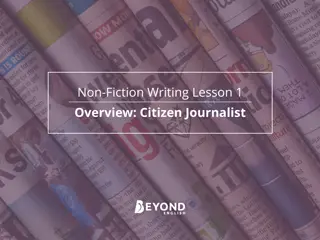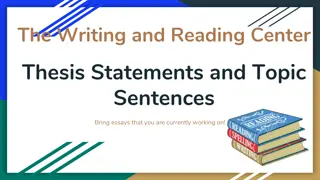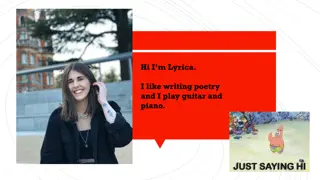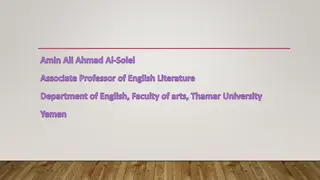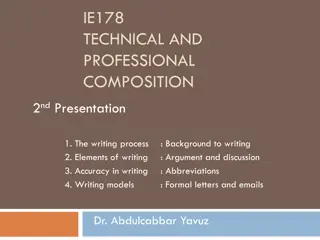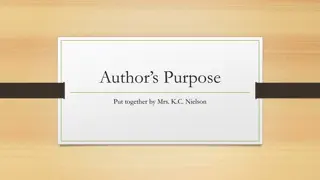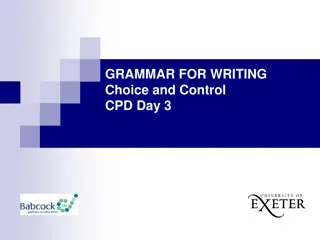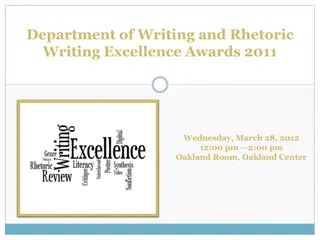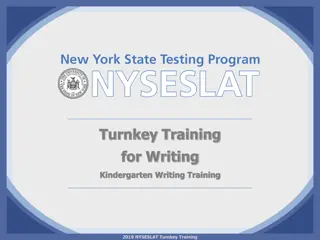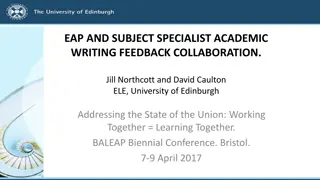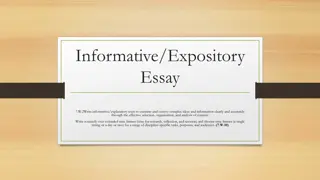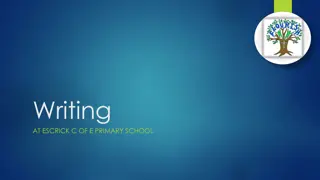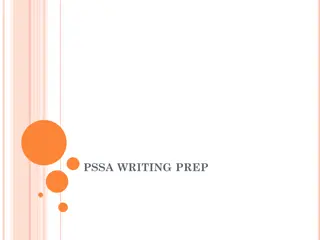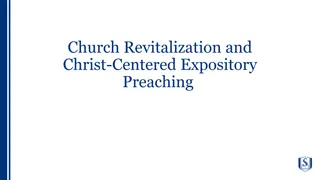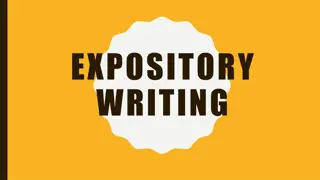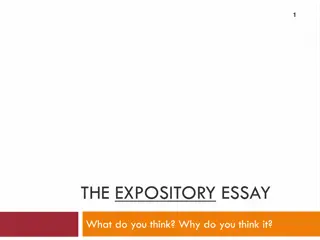Expository Writing: Purpose and Examples
The concept of expository writing and its various purposes through informative slides and activities. Learn how expository writing explains, informs, describes, and instructs using different forms such as letters, recipes, poetry, and more.
Uploaded on Feb 27, 2025 | 1 Views
Download Presentation

Please find below an Image/Link to download the presentation.
The content on the website is provided AS IS for your information and personal use only. It may not be sold, licensed, or shared on other websites without obtaining consent from the author.If you encounter any issues during the download, it is possible that the publisher has removed the file from their server.
You are allowed to download the files provided on this website for personal or commercial use, subject to the condition that they are used lawfully. All files are the property of their respective owners.
The content on the website is provided AS IS for your information and personal use only. It may not be sold, licensed, or shared on other websites without obtaining consent from the author.
E N D
Presentation Transcript
Explains Informs Describes Expository Writing Instruct Defines
Purpose To retell information To describe To explain To instruct To persuade Scientific explanations Personal Narratives Elaborations Letters Summaries Journals Debates Reviews Ads Evaluations Book Reports Letters Recipes Rules Directions Experiments Games Lists Wanted Posters Poetry Scientific reports Social Studies reports Captions Labels ABC books Summaries Journals Reports Auto/biographies Letters Poetry Journals Historical retellings Summaries
Image from: http://www.teachingandlearningtogether.com/expository.html
Bio-PoemActivity Line 1- First name only Line 2- Four adjectives that describe the person Line 3- Sibling of (OR daughter of . . . , mother of . . . , etc.) Line 4- Lover of (3 people or ideas) Line 5- Who feels... (3 feelings the person experienced) Line 6- Who needs (3 items) Line 7- Who gives (3 items) Line 8- Who fears (3 items) Line 9- Who would like to see (3 items) Line 10- Resident of (your city and/or state) Line 11- Last name only
Bio-Poem Example Rosa Determined, brave, strong, loving Wife of Raymond Parks, mother of all children Who loved equality, freedom, and the benefits of a good education Who hated discrimination, loved to stand up for her beliefs, and loved to help others Who feared that racism would continue, feared losing the opportunity to make a difference, and feared that young people might lose opportunities to develop strength and courage Who changed history as she accomplished great strides for equality and encouraged excellence for all Who wanted to see love triumph and see an end to all bias and discrimination in a world in which respect is freely given to all Born in Alabama and living in Detroit Parks from www.ReadWriteThink.org


